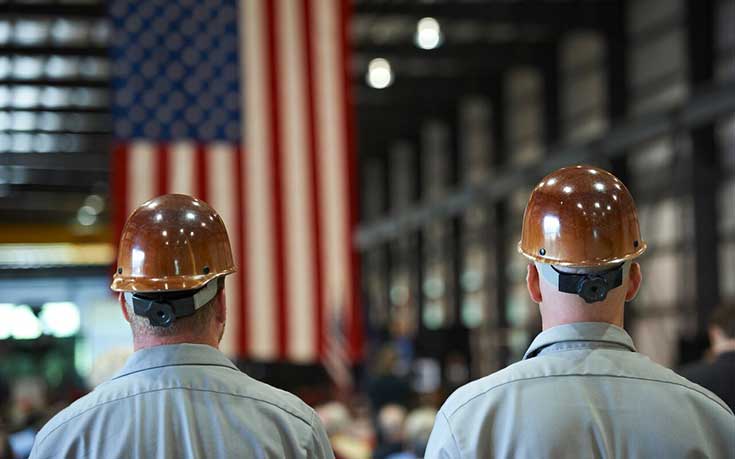A couple of weeks ago, I was honored to be a guest on the nationally syndicated Diane Rehm Show on NPR. Our topic was “Competing Political Visions for America’s Coal Workers,” and the lively discussion (which also included the head of the West Virginia Coal Association), focussed on the uncertain future for a region long dependent on coal, as the industry declines. It’s a subject that hits close to home for me. I live in West Virginia. It’s my home, it’s in my heart, and it’s the birthplace of my daughter, an 11th-generation West Virginian through my husband's side of the family. So I'm deeply committed to finding a path forward for the state and for the region.
Coal mining is a proud tradition in our state and across Appalachia. Coal has powered this country for more than a century, and our coal miners, their families, and our region have sacrificed a great deal to ensure that America is an economic powerhouse and global leader. We owe them all a great debt for bringing us to where we are as a nation today.
But the reality is that, as the climate heats up and air and water pollution take their toll on public health, we are moving away from coal and ramping up clean energy. Now, make no mistake about it, we’re still mining and burning a massive amount of coal in this country, and we still have a lot more work to do. Kids living near the nation’s 300 remaining coal plants are still suffering from asthma attacks, mountaintop-removal mining is still happening and threatening the health of families, and polluting coal ash sites are still endangering the drinking water of millions of Americans.
However, thanks to more than a decade of grassroots advocacy, no new coal plants are being built in the U.S. Moreover, one-third of our existing coal plants are slated for retirement, and the remaining plants face unrelenting pressure from clean energy advocates and competition in the marketplace from renewable energy, which is now cheaper than coal in many places. As a result, coal is falling behind. And while lots of politicians are making empty promises to return coal to its heyday, it’s just not coming back.
Case in point: the most recent numbers on U.S. power generation from the Energy Information Agency. In March, something astonishing happened: Renewables almost caught up with coal. During that month -- which was also one of the hottest in our planet’s history -- the U.S. got 19 percent of its power from wind, solar, and hydropower (10 percent from wind and solar alone), 24 percent from coal, and 34 percent from natural gas. It’s not yet the 100 percent clean energy future we envision, but it’s still a dramatic shift, considering that coal has provided the major of our nation’s power for decades.
So what does that mean for places, like West Virginia, that have long been economically dependent on coal? The best way to honor the sacrifices our region has made to power the nation is to create a path forward for a more diverse and resilient 21st-century economy that benefits workers across the region. We need a transition pathway with the resources and leadership to fuel new economic programs that will light the way for Appalachia in the decades to come.
Key policies are working their way through Washington, D.C., right now that could, if they make it across the finish line, enable Appalachia to get the foothold we need to create community-driven economic growth that would ensure long-term prosperity for the region. One of these critical efforts is called the Power+ Plan.
The Power+ Plan provides a pathway for future economic success in the region by focusing on economic development, job creation, education, land reclamation, and the revitalization of communities affected by a long history of coal pollution, while protecting the healthcare and pensions of coal workers. The Power+ Plan would lay the foundation for that success by giving communities some of the tools they need to begin to thrive on their own terms.
In other words, the Power+ Program would help create new jobs in more industries as the coal sector continues to decline. Our nation has navigated big economic transitions before, such as the closing of military bases, that offer lessons for coal country. See the Jobs Beyond Coal manual for case studies, resources, and more. We can do the same thing in Appalachia if we act now, rather than spend all our energy in a futile attempt to turn back the clock.
We must not only honor the legacy of our region but also ensure its future. That’s why it’s so important that we all speak out in favor of smart economic transition plans that acknowledge our present economic reality while creating the foundation for real growth moving forward. Urge your leaders to join in that fight, and we can ensure a stronger, more resilient economy for Appalachia and the rest of the country for years to come.
